Before we reach ‘Migrants, Merchants and Mariners in the Kentish Cinque Ports, c.1400-c.1600’ at Dover Museum on Saturday, which will be in the blog next week, this week has seen two Lossenham Project events and the monthly Kent History Postgraduate presentation, which was given by Dr Lily Hawker-Yates. I’ll mention the former and then the latter will form the basis for the blog this time.
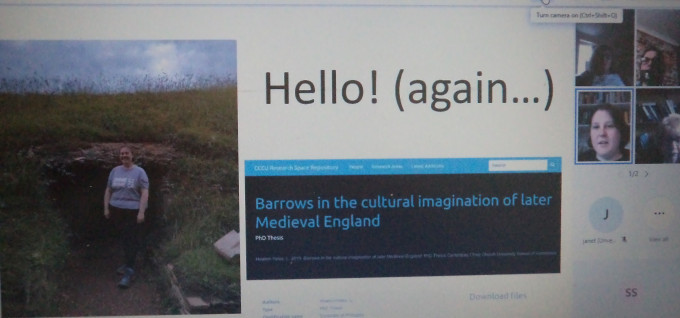
Furthermore, I want to congratulate Dr Diane Heath who has just received the news that she has received a grant from the Garfield Weston Foundation to continue her work with SEND children and their families through the use of Medieval Animals. Additionally, as I’ll be giving a presentation for Kent Archives at Maidstone on Monday to members of the Cinque Ports Federation, I thought I would also mention two of the Monday public talks at the Kent History and Library Centre at Maidstone which Dr Mark Bateson, an archivist there, is organising. These are: Dr David Shaw (Hon. Research Fellow in History, University of Kent) who on Monday 8 April will be speaking on ‘Researching the administration of the Poor Law in the eighteenth century’ at 1pm. David has been using archives holdings of Poor Law settlement certificates, looking at the provision of printed forms by London and local stationers. He will show some of his results for the south-east of England, based on the holdings at the archives at Canterbury and Maidstone. He has been developing graphics software to provide a visualisation of the journeys undertaken by ‘paupers’ from parish to parish.
Secondly, I’ll be back there on Monday 13 May to give a talk on civic ceremonies in the Middle Ages at the Kentish Cinque Ports and I believe later in the year Victoria Stevens, who has been doing an MA by Research under Professor Carolyn Oulton and Dr Claire Bartram, will be giving her presentation on a fascinating ‘great house’ inventory from east Kent. These talks are free, but you need to book a place by either calling 03000 420673 or emailing archives@kent.gov.uk and Mark will be delighted to see you.
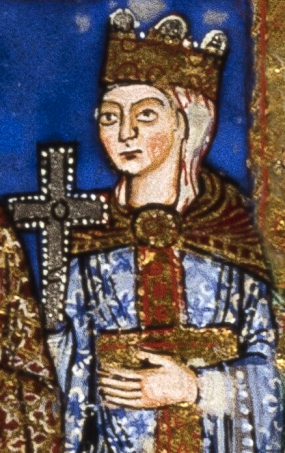
While I am giving out details concerning free talks, please do make a note of the 2024 Annual Becket Lecture on Tuesday 14 May at 6pm (drinks reception from 5.30pm) in The Michael Berry Lecture Theatre, Old Sessions House, CCCU CT1 1PL. This year we are delighted to welcome Professor Elisabeth van Houts (University of Cambridge) who will be speaking on ‘Empress Matilda (d. 1167) and Archbishops in Twelfth-Century Germany, France and England’. Professor van Houts will explore archiepiscopal behaviour during the career of Matilda from child bride and widow in Germany and uncrowned queen regnant England to her second widowhood and retirement in Normandy when she championed Thomas Becket. The lecture is free and all welcome, however booking will be encouraged to give us an idea about numbers and this will be available soon.
Now firstly to the Lossenham Project events and on Monday Isle Heritage CIC hosted an evening of presentations about the archaeological projects Isle Heritage has been undertaking, a short film by Kit Warren showing the opening of the lead coffin and displays of finds from the Lossenham Project excavations from Iron Age bloomery slag to tiles to one of the skeletons found buried in the friary church. To open proceedings, Dr Andrew Richardson gave a very interesting talk about the varied projects they have been doing from excavations involving WWII gun emplacements on the Dover cliffs to landscape studies in and around Winchelsea.

Annie Partridge, another of Isle Heritage’s directors, then explained how they have been working with a charity which seeks to help youngsters who are having issues about being at school. They have been providing them with the chance to do some archaeological work, offering them the opportunity to explore the landscape and generally bond as a team to give them enjoyable days in the countryside. This has been an effective project and the youngsters have developed self-confidence which hopefully will help for the future. As this has been so successful, the charity has asked Isle Heritage to repeat the project this year. Consequently, through their various activities, Isle Heritage is working with a whole range of organisations and charities and is making a good contribution to archaeology in Kent.
After more food and the chance to look at the various displays and talk to Andrew, Annie and Paul, Isle Heritage’s third director, Andrew offered a longer presentation on the archaeological work they, with the team of volunteers from local archaeological groups and interested individuals, have undertaken so far on the Carmelite friary at Lossenham and the neighbouring earthwork known as Castle Toll. The headlines of their findings are that the area was inhabited from the Bronze Age, but it is the Middle to Late Iron Age that has produced the greatest number of prehistoric finds of which the iron slag is probably the most significant. The other period that has yielded the most is the medieval, perhaps not surprisingly, and Andrew covered the matter of the burials found in the friary church in some detail, as well as playing Kit’s film. And, as Andrew said, there will be plenty more work taking place this year which hopefully will help to fill in more of the gaps about the history of this area – so thanks to Isle Heritage for a fascinating evening.
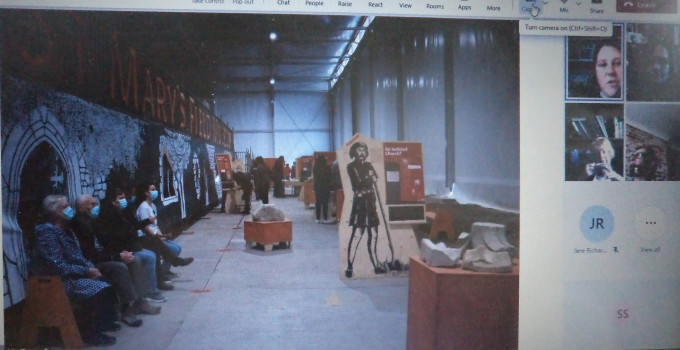
The second Lossenham Project event was the monthly meeting of the volunteer wills group which met at Lossenham. Sadly, Jane and Maureen, two of the group and also CCCU Kent History Postgraduates were not able to be there, but Jason, another member of both groups was present. The wills group now has over 500 wills on the database with a few more will transcriptions waiting to go on. Additionally, Celia, in particular, has been working on the inventories, and we now have a system in place to ensure these are double checked before going onto the group’s Google drive. These are providing fascinating insights into the lives of clothiers in the southern part of the Weald, as well as producing an ever expanding local/regional vocabulary. Others within the group, as well as continuing to transcribe the wills of our chosen parishes, are looking in detail at certain families, and Keith continues to provide fascinating material about the large Brekynden family and the shipbuilding activities of certain family members. Such insights into this part of Kent have been used by Sue H, another member of the group, in her voluntary work for Tenterden Museum, thereby offering a showcase for the wills group’s research through the Museum’s annual exhibition. Thus, this was another successful meeting and the volunteers are looking forward to the restarting of the Lossenham Project newsletter and the inclusion of reports about their findings from the probate materials of those who lived in the Rother Levels many centuries ago.
Moving on now to Lily’s presentation, she had decided to give us insights into ‘life after the PhD’, which for her has been a year as the Public Engagement Archaeologist at L-P Archaeology between 2021 and 2022, and then when L-P Archaeology were taken over by MOLA as Communications Officer. While she was at L-P Archaeology the unit was engaged in work for the HS2 project. For Lily this meant she created and managed the St Mary’s Field exhibition, which covered the church and churchyard, the dig site covered by a very large tent. This meant they could incorporate a covered viewing platform of the excavation, exhibition boards and displays of finds, for not only did they have a medieval church, but also they found a Roman settlement. As Lily said, one of the challenges she faced was providing displays and workshops for different age groups and different levels of knowledge and interest – family visitors, school groups, specialists. Furthermore, even though the finds never got on display because they were found right at the end of the excavation, the archaeologists did find a Roman mausoleum under the church which did make the national press. As a result of all Lily and her team’s hard work, they received a ‘Highly Commended’ Education Archaeological Award as part of the HS2 Learning Legacy.
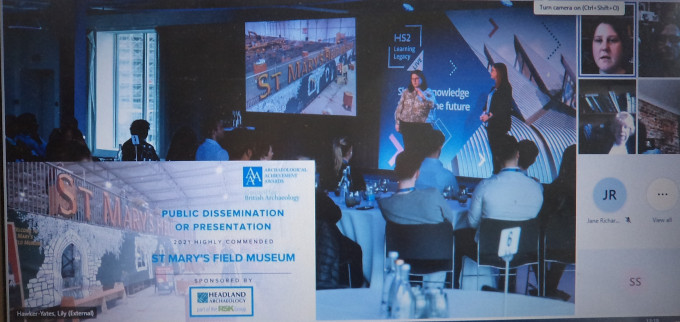
For anyone who knows Lily, they will appreciate that embroidery is one of her passions and she got the opportunity to produce an embroidery/tapestry for Forestry and Land Scotland based on an image on an Iron Age cauldron from Denmark. This was part of a study on Iron Age Scotland with special reference to what it may have been like to live in a broch.
Having moved to MOLA, she is now heavily involved in writing such pieces as press releases, blogs, other social media items including working on a film that showcased MOLA’s exhibition at St James’ church, Piccadilly. In addition to displaying finds and exhibition boards, the team had made a range of cardboard figures that were placed in various pews around the church. Each had a clay pipe and as representatives of different social groups from the 18th century were set up as ‘talking heads’.
Due to the size of MOLA, Lily is involved in a very wide range of projects, and she needs to be able to communicate these to a variety of audiences. One of these is a home learning pack for children aged 5 to 10 (Key Stage 2) which is based on the excavation finds from the A428 improvement scheme. Similarly, she has used the Roman and Iron Age period finds from the Black Cat roundabout on the Cambridge/Bedfordshire border to produce a learning pack that includes cards with contemporary recipes – picked cheese, oat cakes etc.
Such activities can involve further research, as well as the need to write for different audiences in various formats, making for an extremely varied job. These opportunities have extended to guided audio pieces and MOLA also has a graphics team. This has allowed her to acquire a range of skills beyond those she gained from the PhD itself, the heritage work she had done before coming to CCCU and her work on the ‘Finding Eanswythe’ project while she was there.
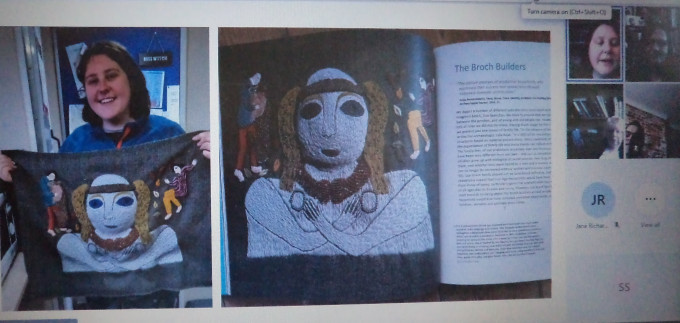
Her most interesting presentation drew a range of questions and comments from others from the group. In part these concerned the problems of becoming a professional in the heritage sector, not least because in smaller units, communications and engagement would be done by the same person. So many thanks Lily, as well as members of the Kent History Postgraduates group for making this a very good session.
 Centre for Kent History and Heritage
Centre for Kent History and Heritage Sheila Sweetinburgh
Sheila Sweetinburgh 1504
1504

